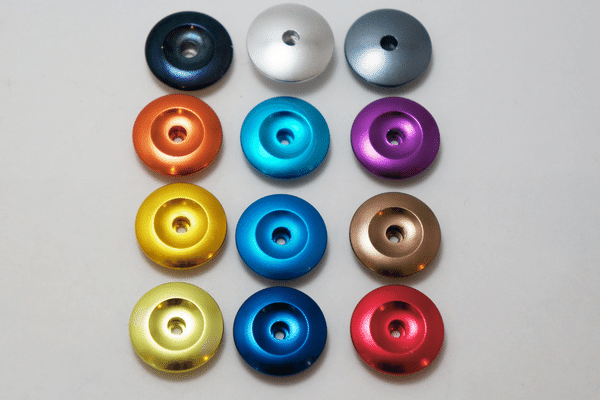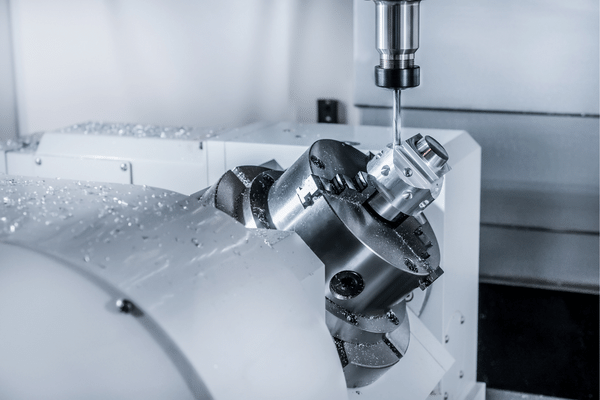Aluminum machined parts are popular for various applications, including automotive, aerospace, and medical industries. This metal is often used in its natural state but can also be treated with various surface treatments.
Machining aluminum is challenging because it tends to gall and wear quickly. When machining an aluminum part, you must choose a surface treatment that will provide the best possible finish while reducing galling and wear. Here are eight options:
Anodizing
The anodic oxidation process is a chemical method of surface treatment that provides a hard, corrosion-resistant, and abrasion-resistant coating on aluminum. The anodic oxidation treatment also provides a passivation layer on the aluminum part, improving the part’s cleanliness and lubricity. This treatment can be applied to many products, including metal parts, wood, plastic, and rubber.
Anodizing is the electrolytic passivation of aluminum or its alloys with oxide layers of varying thicknesses. Other metal parts can also be treated. The resulting oxide layer acts as a barrier to corrosion. Anodizing increases the thickness of the natural oxide layer on the metal, creating a porous aluminum oxide layer that can range from less than a micrometer (μm) to several micrometers thick.
The process consists of immersing an aluminum part in an electrolyte solution (sulfuric acid) at room temperature or below (approximately 70°F [21°C]). During immersion, a DC voltage source’s positive (+) terminal is connected to one end of the part, while the negative (-) terminal is connected to the other. The electrical current causes the separation of oxygen ions from dissolved oxygen molecules and migration toward the cathode, where they are reduced back to their original state. The cathode is a pure aluminum electrode that serves as the anode of the electrochemical cell.

Chromium plating
Chromium plating is one of the main surface treatments for aluminum machined parts. It is used to provide a strong and durable finish on aluminum components. The basic process involves immersing the part into a chromic acid bath to form a thin layer of chromium oxide, followed by electroplating the product with a nickel-based alloy in an electrolytic cell.
Various chromium plating processes can be used, depending on the desired application. In general, all procedures begin with cleaning and preparing the surface of the aluminum part and then placing it in an acid solution that contains chromium III ions (Cr3+). The part is then removed from the bath and rinsed to remove any traces of Cr3+. Next, an electrolytic cell is charged with nickel sulfate and distilled water while running at a low voltage current (typically 0.5V). The part is then placed in this electrolytic cell and coated with nickel through electroplating. After this process, the part must be rinsed again to remove any trace amounts of nickel salts or other contaminants before it can be used in its final application.

Dyeing
Dyeing is a surface treatment process that can impart colors to aluminum, zinc, and magnesium. The dye penetrates the surface of the part and changes its color. The dye may also be applied to the surface of a metal by immersion in a bath containing the dye or by spraying it with a solution containing the dye.
The most common dyes are aniline, nitrocellulose, nitro phosphate, fuchsin, and thionin. These dyes are non-toxic and can be used as food coloring agents. Pigments are also used for coloring metals. These pigments may be organic or inorganic and include iron oxides, titanium dioxide, ultramarine blue, and lead chromate.

Electroless nickel plating
Electroless nickel plating is a surface coating process that uses electroless nickel as the plating metal. The process involves immersing parts in an electrolyte bath containing nickel salts, followed by high current densities. The main advantage of electroless plating is that it does not require any external source of electricity, so it can be carried out on-site without using large power supplies or complex equipment.
The main technical features of electroless nickel plating are:
Low cost and simple technology;
High-quality coating with very good corrosion resistance;
Wide range of substrates (metals, plastics, glass);
Coating thickness up to 3 mm;
High hardness and wear resistance;

Glass bead blasting
Glass bead blasting is a surface finishing process that uses abrasive particles to remove material from a metal surface. It can be used on any metal, but it is most common on aluminum.
Glass bead blasting uses glass beads and small balls made from silica or quartz. These beads are propelled by compressed air at high velocity toward the surface being blasted. When they strike the surface, they break apart into smaller pieces and continue to erode at the material until nothing is left for them to do their job. The resulting finish is smooth with no visible scratches or defects such as pits or cracks, making it ideal for applications where aesthetics are important.
Glass bead blasting can also remove paint from machined parts if they are large enough and intricate. For example, suppose you have a large machine shop where many parts are painted by spraying on an offline application system or electrostatic sprayer. In that case, glass bead blasting may deburr these parts before painting them. This prevents the paint from chipping off during assembly or use.

Powder Coating
Powder coating is a finish applied to metal parts using an electrostatic powder spray gun. The part is placed on a conveyor belt, and the gun sprays a thin layer of powder onto the part. The part then passes through an oven, melting into a solid film. This process is repeated until several layers of protection are made of different colored powders.
Powder coatings can be durable and long-lasting, but they also tend to be more expensive than other finishes like painting or anodizing.
The primary benefits of powder coating are that it has good adhesion with aluminum, it reduces corrosion. It wears, protects from chemicals and high temperatures, and can be used on bare and plated metals.

Buffing
Buffing is a process that uses abrasive discs or wheels to remove material from the surface of a workpiece. It produces a smooth finish on a part, creates a mirror finish, removes burrs, and polishes the surface.
The buffing process can be performed dry or wet. Wet buffing is usually carried out with a polishing compound on the buffing wheel, which is then used to polish the part.
Buffing can be performed manually using handheld power tools and machines or by automated systems such as robots and conveyor belts.

Electroplating
Electroplating is a process that uses electric current to reduce cations and anions (positively charged ions) from aqueous solutions onto the surface of a metal part. The most common electroplating processes are bright electroplating and chemical conversion coating.
Electroplating produces parts with desirable properties such as wear resistance, corrosion resistance, or aesthetic appearance. The thickness of the plated layer can be controlled by adjusting the duration of the electroplating process. For example, long-duration plating yields thicker deposits than short-duration plating.

Conclusion
As you can see, there are many advantages to each of the surface treatment technologies mentioned above. Some are easier to handle than others—some are more versatile and cost-effective in certain situations. The key lies in knowing which of the eight technologies is the right for your project.





